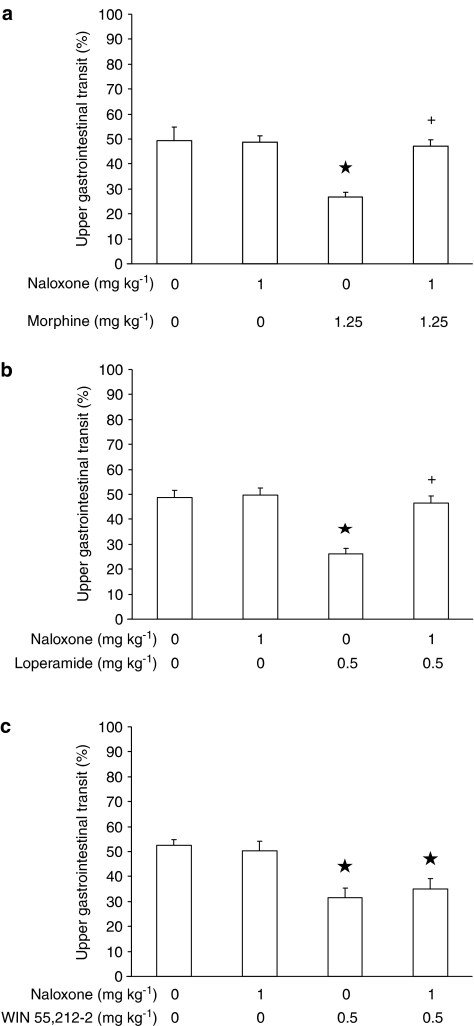Figure 6.
Effect of the acute, intraperitoneal administration of naloxone on the decrease, induced by the acute, intraperitoneal administration of morphine (a), loperamide (b), and WIN 55,212-2 (c), in the distance travelled in the small intestine by the head of the nonabsorbable coloured marker, carmine, in CD1 mice. Mice were killed 20 min after carmine administration. Distance travelled was expressed as percent of total length of the small intestine. Each bar is the mean±s.e.m. of n=10 mice. *P<0.05 with respect to: 0 mg kg−1 naloxone plus 0 mg kg−1 morphine-treated mice (Newman–Keuls test) in (a); 0 mg kg−1 naloxone plus 0 mg kg−1 loperamide-treated mice (Newman–Keuls test) in (b); 0 mg kg−1 naloxone plus 0 mg kg−1 WIN 55,212-2-treated mice (Newman–Keuls test) in (c). +: P<0.05 with respect to: 0 mg kg−1 naloxone plus 1.25 mg kg−1 morphine-treated mice (Newman–Keuls test) in (a); 0 mg kg−1 naloxone plus 0.5 mg kg−1 loperamide-treated mice (Newman–Keuls test) in (b).

